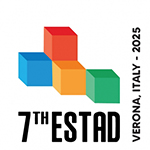Speaker
Description
Hybrit Development AB, a joint initiative between the mining company LKAB, steel producer SSAB, and electricity producer Vattenfall, aims to develop the world's first fossil-free ore-based steelmaking route. Since 2020, Hybrit has funded laboratory studies conducted by Swerim AB, the Swedish metallurgical research institute, to study the value chain from hydrogen reduction of iron ore pellets, to melting and refining of the hydrogen reduced iron (H-DRI).
This presentation will link and discuss the different parts of the study that covers sustainable EAF slag practice based on Hybrit’s H-DRI. This contains three parts: (1) the autogenous slag of H-DRI, (2) phosphorus refining, and (3) recirculation of slag.
H-DRI contains iron, unreduced iron oxide, and some other oxides. The pellet also contains impurities, mainly phosphorus. During the heating of H-DRI, the oxides melt prior to the iron and form an autogenous slag flowing in the H-DRI porous network. When iron melts, the slag is distributed as droplets in the molten iron, generating a huge surface area between metal and slag. This is very beneficial for the kinetics of reaction between the phases and to transfer all phosphorus to the slag. A possibility arises to use this opportunity to design the autogenous slag already during pelletization, to obtain phosphorus refining already during the melting of H-DRI. This would minimize the need for slag additions during EAF practice, shorten EAF process times and decrease the need for electrical energy.
Lastly, used EAF slag needs to be handled after the EAF process. The slag is not suitable for cement industry due to high iron oxide and phosphorus levels, and landfilling is becoming more and more constrained. Reducing iron oxide and phosphorus from the slag is therefore interesting. Then, it could partly be recirculated back to the EAF-process, and be more suitable for the cement industry.
